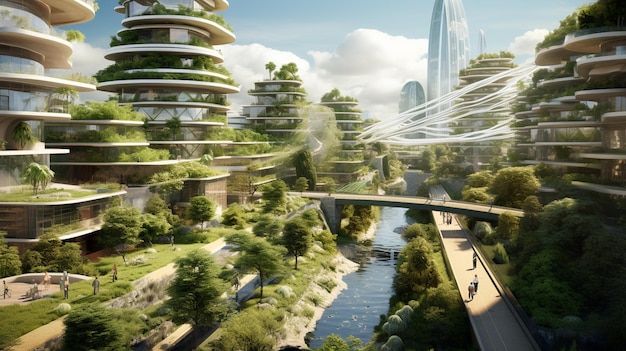The Largest Cities in the World: A Look at Population Growth and Urbanization

Image Source: FreeImages
Primary Keyword: largest cities in the world Secondary Keywords: city population, urban areas, population growth, urbanization
Introduction
The world’s population is rapidly growing, and with it, the size and complexity of cities are also expanding. As we strive to understand the dynamics of urbanization and its impact on our planet, it’s essential to explore the largest cities in the world and their population trends. In this article, we will delve into the fascinating realm of city demographics, examining the top cities by population and their remarkable growth over the years.
The Rise of Urban Areas: Understanding City Definitions
Different authorities define cities in various ways, making comparisons between the largest cities a challenging task. To ensure consistent analysis, we turn to the World Urban Areas Report by Demographia, a St. Louis-based consultancy specializing in urban planning. According to Demographia, an urban area is defined as a continuously developed land mass within a labor market, devoid of rural land. Think of it as the “urban footprint” visible from an airplane on a clear night.
Exploring the Top 20 Largest Cities in the World
Let’s begin our journey through the largest cities in the world by examining the top 20 urban areas based on population. These cities represent the vibrant tapestry of human civilization, each with its unique characteristics and challenges. From the bustling streets of Tokyo to the cultural melting pot of New York, we’ll explore the diversity and scale of these global metropolises.
1. Tokyo-Yokohama: 37,732,000 People
Tokyo-Yokohama takes the top spot as the most populous city in the world, with a staggering population of 37.7 million. This vibrant metropolis is known for its cutting-edge technology, rich cultural heritage, and bustling cityscape. With a mix of traditional and modern architecture, Tokyo offers a glimpse into the future while honoring its historical roots.
2. Jakarta: 33,756,000 People
As the capital of Indonesia, Jakarta ranks second on our list with a population of 33.8 million. This dynamic city is a melting pot of diverse cultures, cuisines, and traditions. With its rapid urbanization, Jakarta faces challenges such as traffic congestion and environmental sustainability. However, the city continues to grow and evolve, attracting both local and international investments.
3. Delhi: 32,226,000 People
Delhi, the bustling capital of India, claims the third spot with a population of 32.2 million. Known for its rich history and architectural wonders, Delhi is a testament to India’s cultural heritage. However, rapid population growth has strained the city’s infrastructure, leading to challenges in areas such as transportation, housing, and sanitation.
4. Guangzhou-Foshan: 26,940,000 People
Situated in southern China, the Guangzhou-Foshan metropolitan area is the fourth-largest city globally, with a population of 26.9 million. This thriving economic hub is renowned for its manufacturing prowess and bustling trade. With a blend of modern skyscrapers and historical landmarks, Guangzhou-Foshan offers a glimpse into China’s rapid development.
5. Mumbai: 24,973,000 People
Mumbai, also known as the “City of Dreams,” ranks fifth on our list with a population of 24.9 million. As India’s financial and entertainment capital, Mumbai attracts people from all walks of life in search of opportunities. However, rapid urbanization has led to challenges such as slum dwellings and overcrowding. Nevertheless, Mumbai continues to be a vibrant and resilient city.
6. Manila: 24,922,000 People
The capital city of the Philippines, Manila, takes the sixth spot with a population of 24.9 million. With its rich history and cultural heritage, Manila offers a unique blend of Spanish and American influences. However, population growth has led to urban challenges, including traffic congestion and informal settlements. Efforts are being made to address these issues and create a sustainable future for Manila.
7. Shanghai: 24,073,000 People
Shanghai, one of China’s most iconic cities, ranks seventh on our list with a population of 24.1 million. Known as a global financial and commercial center, Shanghai boasts a skyline adorned with towering skyscrapers. The city’s rapid expansion, fueled by economic growth, has presented challenges in managing urbanization sustainably.
8. Sao Paulo: 23,086,000 People
Sao Paulo, the largest city in the Americas, claims the eighth spot with a population of 23.1 million. This vibrant Brazilian metropolis is a melting pot of cultures, renowned for its art, music, and gastronomy. Sao Paulo faces challenges such as economic inequality and urban sprawl, but it continues to attract people from all over the world.
9. Seoul-Incheon: 23,016,000 People
The Seoul-Incheon metropolitan area in South Korea ranks ninth on our list, with a population of 23 million. This bustling region is known for its technological advancements, cultural heritage, and thriving entertainment industry. Seoul-Incheon continues to grow rapidly, leading to challenges in housing affordability and transportation infrastructure.
10. Mexico City: 21,804,000 People
Mexico City, the capital of Mexico, takes the tenth spot with a population of 21.8 million. This vibrant city is a treasure trove of history, art, and culinary delights. However, rapid urbanization has resulted in challenges such as air pollution, traffic congestion, and socioeconomic inequality. Efforts are underway to create a more sustainable and inclusive future for Mexico City.
11. New York: 21,509,000 People
New York City, often referred to as the “Big Apple,” ranks eleventh on our list with a population of 21.5 million. This iconic city is a global center for finance, culture, and innovation. From the towering skyscrapers of Manhattan to the cultural diversity of Queens, New York offers a unique urban experience. However, the city faces challenges in housing affordability and socioeconomic disparity.
12. Cairo: 20,296,000 People
Cairo, the capital of Egypt, claims the twelfth spot with a population of 20.3 million. With its rich history dating back to ancient times, Cairo is a hub of cultural heritage and architectural wonders. However, rapid population growth has strained the city’s resources, leading to challenges in areas such as housing, transportation, and waste management.





